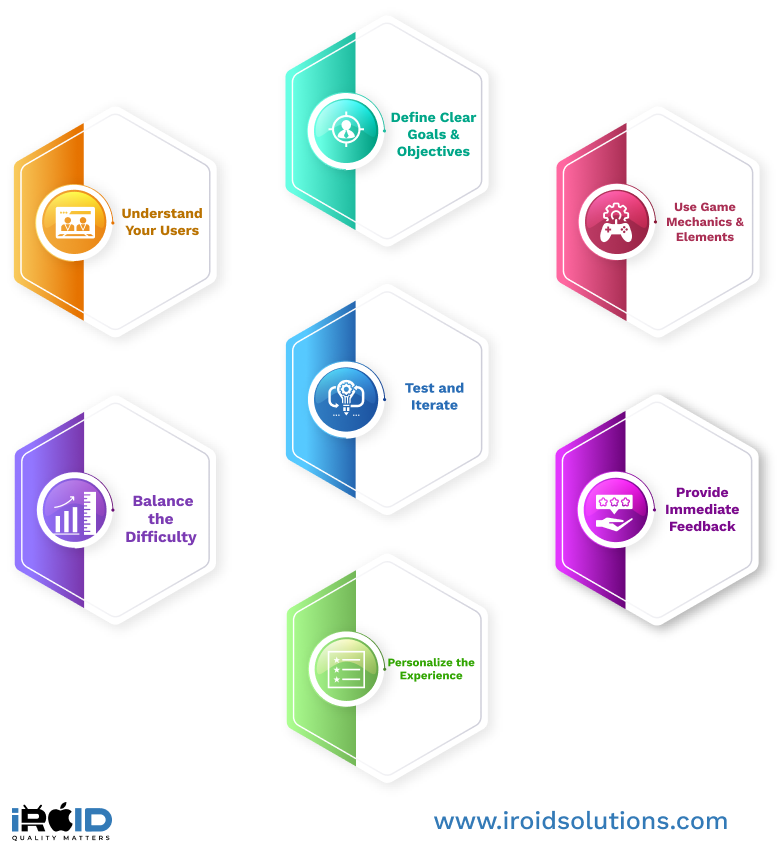Gamification is the use of game design techniques and mechanics to engage and motivate people to achieve their goals. It's a popular trend in the mobile app industry, where developers use it to increase user engagement, improve retention, and drive revenue. This blog post'll explore the best practices and tips for mobile app gamification.

1. Understand Your Users
Before you start adding gamification elements to your mobile app, it's essential to understand your users' needs, wants, and expectations. Conducting user research and analysis can help you identify what motivates your users and what kind of rewards they're looking for. This information can help you design an engaging gamification strategy that resonates with your audience.
2. Define Clear Goals and Objectives
Gamification should be tied to clear goals and objectives that align with your business objectives. You should define what actions you want users to take, what behaviors you want to encourage, and what outcomes you're looking for. These goals should be specific, measurable, achievable, relevant, and time-bound (SMART). Clear objectives help users understand what they need to do to achieve rewards, which can motivate them to take action.
3. Use Game Mechanics and Elements
Game mechanics are the building blocks of gamification. They include points, badges, leaderboards, challenges, quests, levels, and rewards. These mechanics can be used to create a sense of progression, competition, achievement, and social interaction in your app. When used effectively, these mechanics can motivate users to engage with your app more frequently and for longer periods.
4. Provide Immediate Feedback
Feedback is an essential part of gamification. Users want to know how they're doing, whether they're progressing towards their goals, and what they need to do to achieve rewards. You should provide immediate feedback whenever users complete actions or earn points, badges, or rewards. This feedback can be in the form of visual and audio cues, notifications, or messages.
5. Personalize the Experience
Personalization is crucial in gamification because users want to feel that their achievements are unique and meaningful. You should tailor the gamification experience to each user's preferences, behaviors, and interests. This can be done by using data and analytics to segment users into different groups and offering rewards and challenges that are relevant and appealing to each group.
6. Balance the Difficulty
The difficulty level of gamification elements should be balanced to keep users engaged and motivated. If the challenges are too easy, users will lose interest quickly. If they're too hard, users will get frustrated and give up. You should gradually increase the difficulty level as users progress through the levels or quests. You should also offer different levels of difficulty for different types of users, so everyone can participate and feel challenged.
7. Test and Iterate
Gamification is not a one-size-fits-all solution. You need to test different game mechanics, reward systems, and difficulty levels to see what works best for your users. You should also monitor user engagement and retention metrics to measure the effectiveness of your gamification strategy. Based on the results, you should iterate and improve your gamification elements to make them more engaging and rewarding.
In Conclusion
Mobile app gamification can be a powerful tool to increase user engagement, improve retention, and drive revenue. However, it should be designed with the user in mind, tied to clear goals and objectives, and personalized to each user's preferences and interests. By following the best practices and tips outlined in this post, you can create a gamification strategy that resonates with your users and drives business results.
Are you looking to gamify your mobile app? Contact Us to discuss how we can help you design and implement an effective gamification strategy that engages your users and drives
Blog Related FAQs:
Recent Blog Posts
Get in Touch With Us
If you are looking for a solid partner for your projects, send us an email. We'd love to talk to you!














